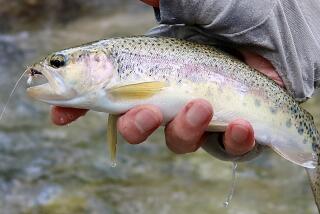The area around Rocky Flats nuclear plant may soon open to the public — and some say that’s a disaster in the making
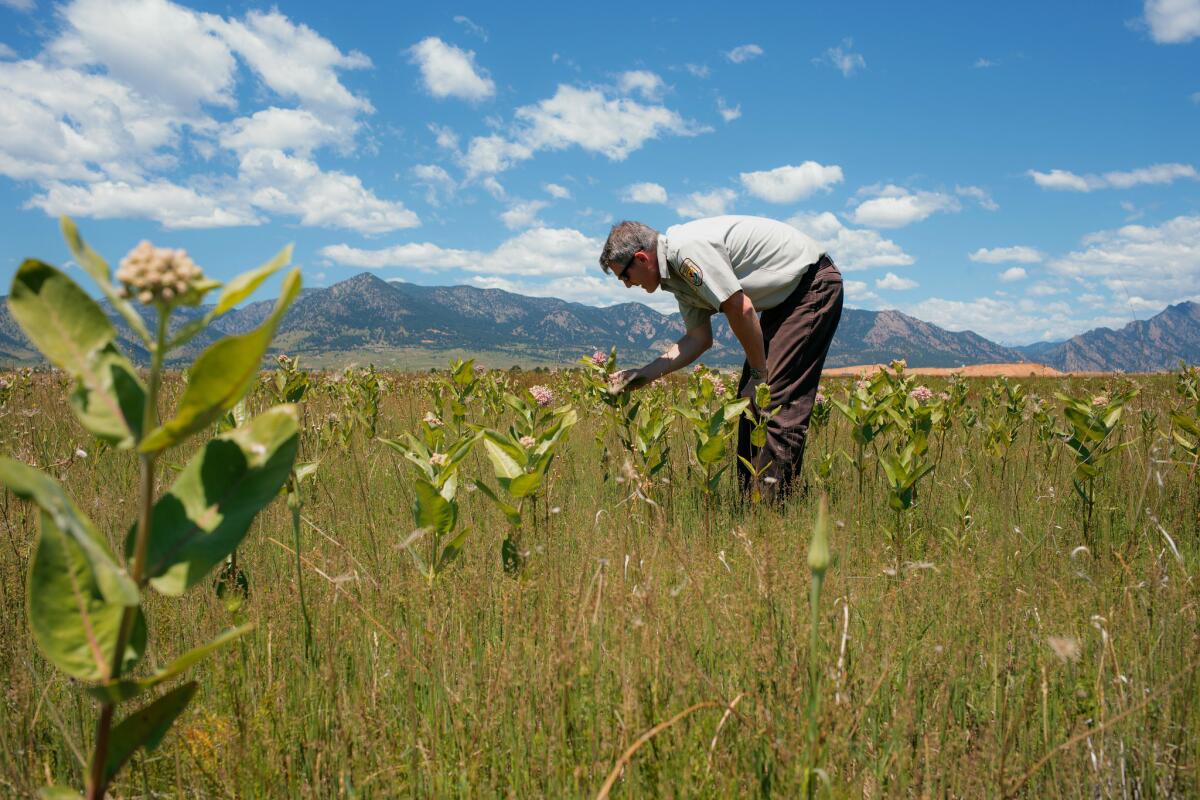
Reporting from Golden, Colo. — After bumping his truck up a steep rise, David Lucas got out and looked over a sea of green hills rolling toward the austere peaks of the Rocky Mountains.
Elk grazed in the valley below. Cone flowers poked their yellow heads through the dry soil. Stands of rare xeric tallgrass prairie, one of the oldest varieties on earth, swayed in the hot wind.
For the record:
9:30 a.m. July 24, 2018An earlier version of this article said the Rocky Flats buffer zone was designated a refuge in 2007. It was designated in 2001, but was not turned over to the Fish and Wildlife Service until 2007.
“The biodiversity of this place is crazy — 630 identified plant species,” Lucas said. “I saw about 300 common nighthawks out here the other night, just lying on the road.”
But Lucas, who manages this place, knows it’s no ordinary wildlife refuge. History hangs heavy over these 5,237 acres. For decades, it served as a buffer zone surrounding one of the most contaminated places on earth, the Rocky Flats nuclear weapons plant.
And now as the Rocky Flats National Wildlife Refuge gets ready to open to the public, a collection of citizens, scientists and activists is fighting to keep it shut. They say hikers, bikers and equestrians using the trails will kick up plutonium-contaminated dust, raising cancer risks for the entire region. A preliminary injunction to stop the Sept. 15 opening was heard in federal court here last week.
“Where I live there are probably particles of plutonium on every house. Why increase the risk to surrounding communities by having people track in and out of these places?” said Bonnie Graham-Reed, 61, of neighboring Arvada. “They haven’t done any testing since 2004. It’s utterly irresponsible.”
From 1952 to 1989, Rocky Flats made plutonium triggers for nuclear bombs. There were countless incidents that were never reported — fires, leaking barrels of plutonium, mishandling of hazardous chemicals.
In 1989, the FBI launched “Operation Desert Glow,” raiding Rocky Flats and seizing evidence. The plant was later shut down and declared a Superfund site by the Environmental Protection Agency. The $7.7-billion cleanup operation ended in 2006.
Meanwhile, in 2001, Congress turned the buffer zone into a national wildlife refuge. The U.S. Fish and Wildlife Service began managing the site in 2007.
But plans to build trails, a visitors’ center and allow public access have caused widespread alarm.
Denver public schools and six other districts have barred their students from taking field trips to the refuge.
Lucas, who oversees the site for the Fish and Wildlife Service, said the refuge was cleared by the EPA in 2007 for unlimited, unrestricted use.
“Our position is we believe it is 100% safe for employees and visitors,” he said. “That is based on science.”
Even so, plutonium has been found in the refuge’s surface soil, sometimes above background levels.
Lindsay Masters, Rocky Flats project manager for the Colorado Department of Public Health and Environment, said the health risk is minimal.
“This is one of the most studied pieces of land on the planet,” she said. “We tested the soil, water and groundwater. There are areas above background, but they were at half the regulatory action level so they didn’t need remediation.”
She said someone who went to the refuge every day for two and half hours, 100 days a year for 20 years would have an excess cancer risk of less than 1 in a million.
“The risk is so low, you could build a house on it,” she said.
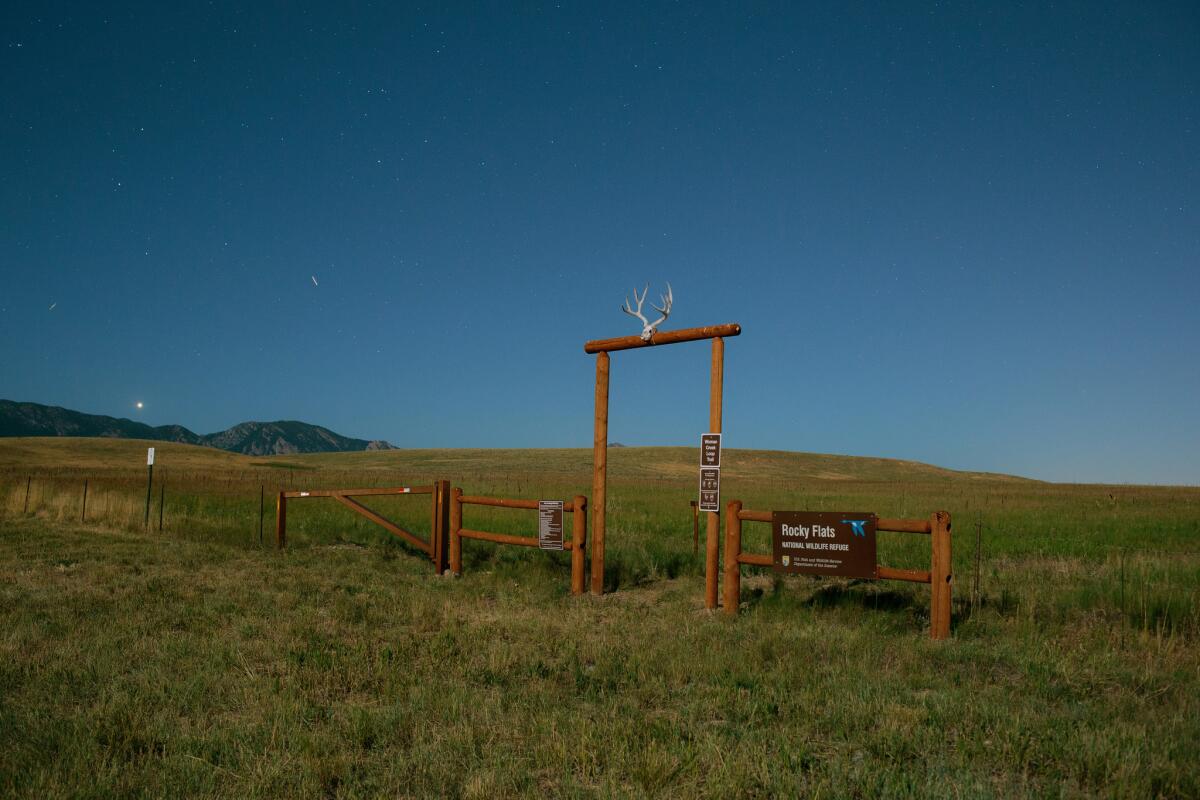
Opponents insist there is no safe level of plutonium. And they say the Fish and Wildlife Service is relying on an environmental assessment it did in 2004 that doesn’t take into account new developments. They include the construction of more houses near the refuge and soil erosion caused by flooding in 2013 and 2015 that could have brought plutonium to the surface.
The government says no new tests are needed since the EPA has approved unrestricted use of the refuge.
Last Tuesday, U.S. District Judge Philip Brimmer heard arguments from both sides.
Attorney Randall Weiner, representing a group of citizens and nonprofits, told the judge that without additional environmental testing the site represents a public health risk.
One of his witnesses, John W. Barton, worked for 21 years at Rocky Flats as a radioactive control technician. He monitored radiation levels as workers put plutonium waste into 55-gallon white drums.
Weiner showed him a photo of a white drum lying in a pond at the refuge. He asked whether it looked like those that held radioactive waste.
“This drum is suspicious, in my opinion,” Barton said, “because it is similar in nature to the drums we used at Rocky Flats.”
Weiner asked Barton whether he would ever visit the refuge.
“Never,” he replied.
Another witness, Harvey Nichols, a retired biology professor, was a contractor for the Department of Energy in 1975-76 researching airborne particles from Rocky Flats. He sampled snow on what is now the refuge.
“I found a great number of radioactive particles,” he said, estimating the number at about 100 billion particles of plutonium per acre. “I believe there is a high probability of people inhaling these particles.”
Jessica Held, a Justice Department attorney representing the federal government, pointed out that Nichols last did his testing in the 1970s and sampled snow, not soil or dust.
She said it was “purely speculative” to assume plutonium would be released into the air by trail use at the refuge.
During the lunch break, some of those in the courtroom staged a protest outside.
“There is no safe level of plutonium and there is plutonium all over the property,” said Brittany Gutermuth, 25, a member of the Rocky Mountain Peace and Justice Center, which has fought the opening of the refuge. “I roll up my window when I drive by.”
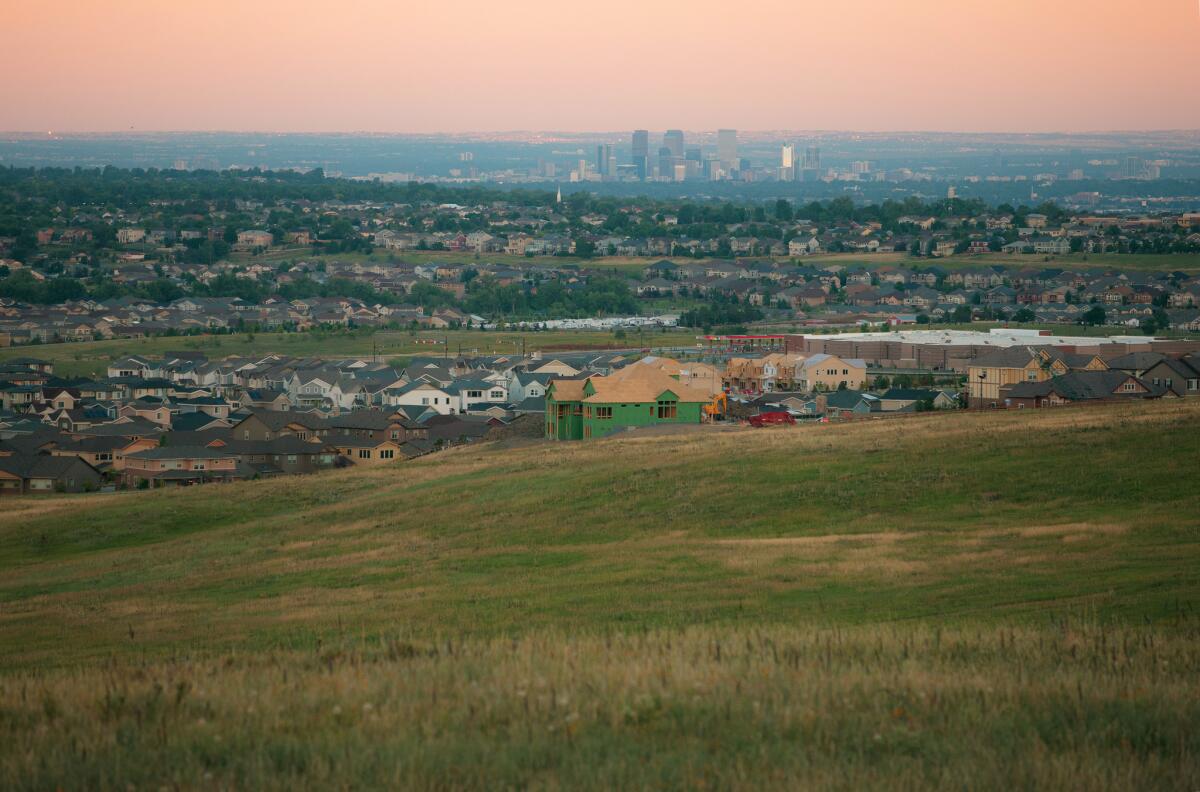
Michelle Gabrieloff-Parish, 40, is part of Candelas Glows, a group of homeowners near the refuge.
“There are so many gorgeous areas in Colorado,” she said. “I don’t see any need for anyone to go out there.”
Inside the courtroom, Brimmer asked why, if the EPA had cleared the site, more testing was needed.
“Our experts are looking at entirely different exposures. Dust, not soil,” Weiner said. “Why wouldn’t Fish and Wildlife look into this? We are looking at one of the most contaminated places in the world. For them to open this refuge without doing an analysis would be a travesty.”
Some local governments plan to do soil sampling on the edges of the refuge, with results expected in October. Weiner asked the judge to at least push back the opening until then.
Brimmer is expected to make a ruling in the next few weeks.
Back at the refuge, Lucas was joined by Supervisory Ranger Cynthia Souders and Sharon Bokan, a volunteer and former Rocky Flats engineer.
“Once people get out here, they forget about the plant,” Bokan said.
Years of isolation have made the refuge an island of biodiversity amid an increasingly urbanized region just 16 miles northwest of Denver. While the area remains technically off-limits until September, public tours have been offered since 2015.
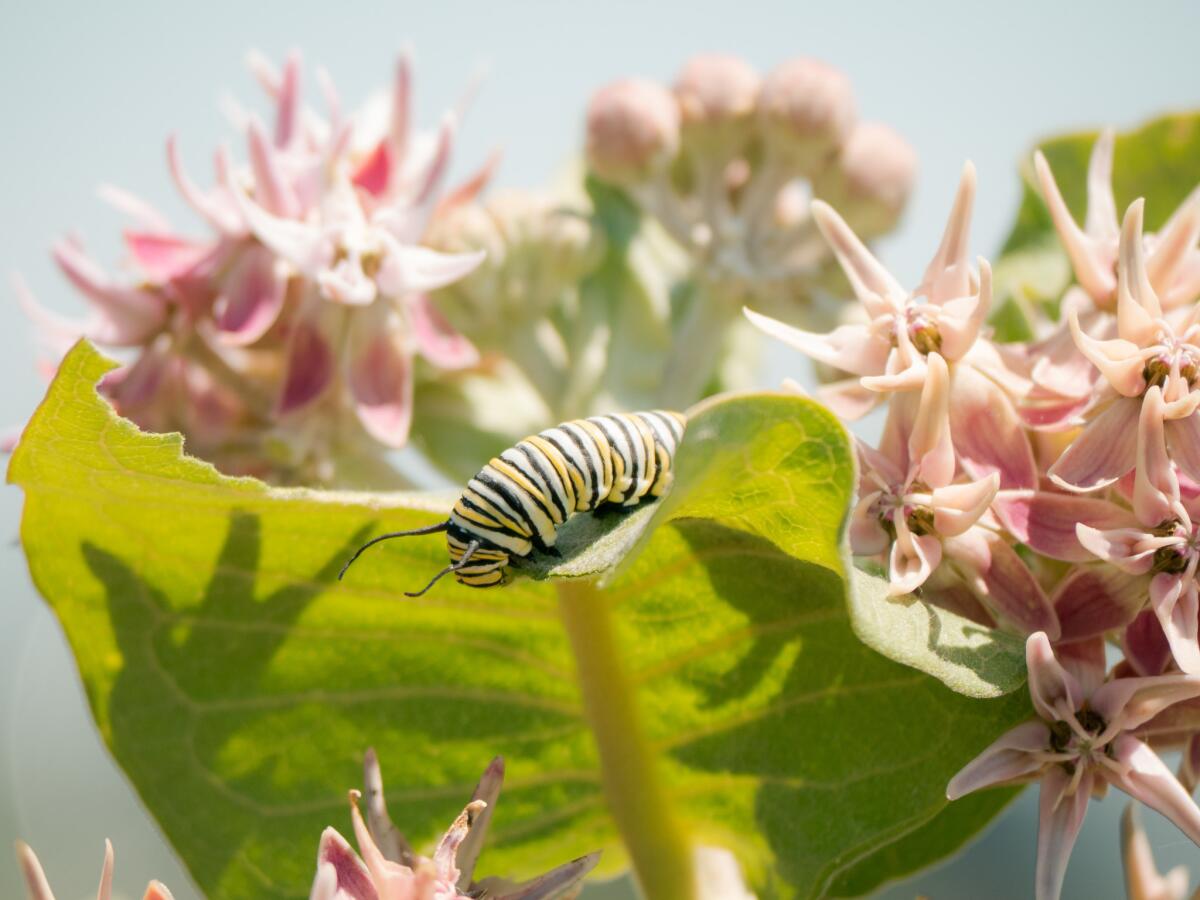
Souders stopped often to admire mariposa lilies, lupines and larkspur. The land was rugged and dry, shaded by the occasional cottonwood. The few marshy spots were blanketed in cattails. In some areas, lines of houses sat near the edge of the property.
The refuge encircles a 1,300-acre area managed by the Department of Energy and closed to the public. The plant’s nuclear production work was done inside the zone.
Yet that seemed a world away now, amid the birds and wildflowers.
Lucas and the others waded into a field of milkweed, searching for monarch butterfly larvae. They found one munching leaves so loudly it was audible a foot away.
Bobcats, mountain lions and deer live here as well. Some of the deer have tested positive for plutonium and uranium.
“But only at background levels,” Lucas said.
As he quietly watched a mother elk escort her calf up a hillside, he sounded increasingly resolute about the job ahead.
“We were given this place to manage,” he said, “and we will manage it well.”
Kelly is a special correspondent.
More to Read
Sign up for Essential California
The most important California stories and recommendations in your inbox every morning.
You may occasionally receive promotional content from the Los Angeles Times.

